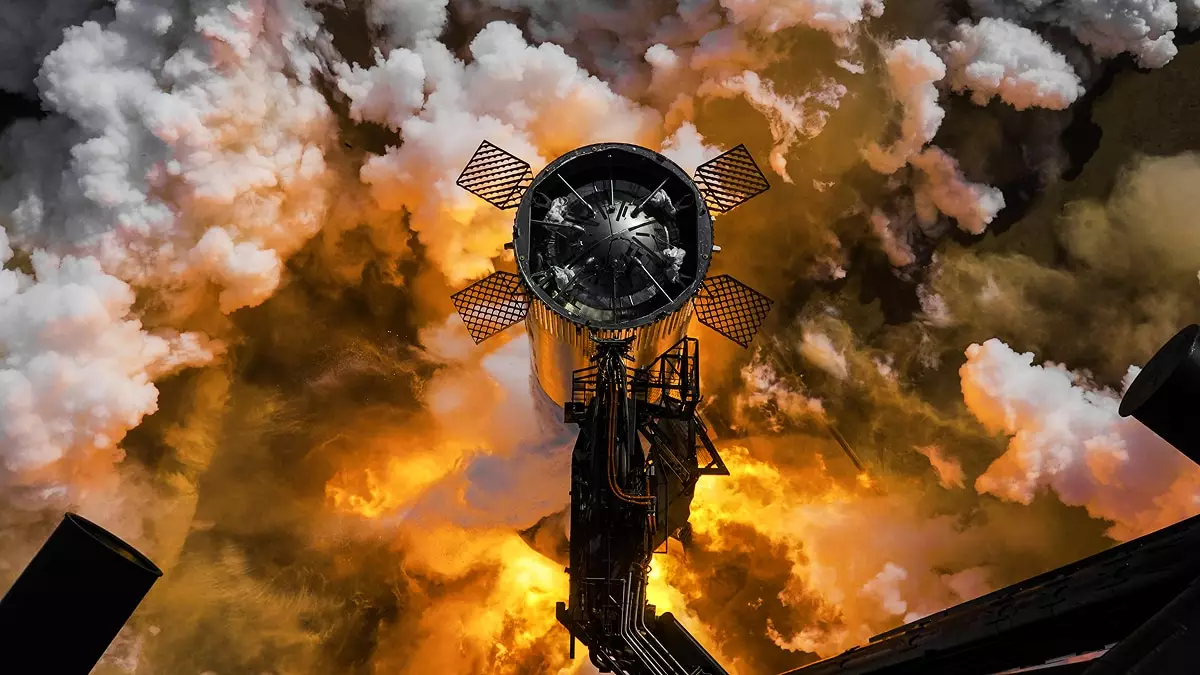SpaceX has recently undertaken significant steps in its preparations for the next integrated flight test of the Starship launch system. At their Starbase facility in Texas, static fire tests were conducted on both the Super Heavy booster and the Starship second stage—a crucial phase in the rocket’s development. These tests are designed to ensure that both components can operate as intended, under conditions that simulate actual launch scenarios.
The Super Heavy booster’s static fire test was particularly notable. It involved all 33 Raptor engines igniting simultaneously, which allows engineers to observe the combined performance of the engines and the booster as a whole. This represents a significant milestone, as the full-duration static fire provides valuable data to inform future launch attempts. Meanwhile, the second stage of Starship underwent testing with variable thrust conditions to mimic different flight phases, another critical aspect of ensuring the vehicle’s reliability during actual missions.
Looking Ahead: Integration and Approval Processes
As SpaceX progresses, the next logical step is stacking the two stages of the rocket. This integration will be pivotal as the team prepares for the forthcoming flight, known as Integrated Flight Test 8 (IFT-8). However, this ambitious schedule is contingent on receiving the final go-ahead from the Federal Aviation Administration (FAA). Currently, projections suggest that the test could occur by the end of February, assuming regulatory approval is granted.
The last test flight, IFT-7, had mixed results. Although the Super Heavy booster was successfully captured using robotic arms of the launch tower, communication with the Starship’s second stage was lost during flight, leading to an in-flight breakup which resulted in debris falling into the Caribbean. Such outcomes highlight the inherent challenges SpaceX faces as it strives to refine the Starship system. Continuous engineering assessments and design improvements will be integral to correcting these issues and enhancing flight stability and descent control for subsequent missions.
Future Prospects and Broader Goals
SpaceX’s overarching vision for Starship is ambitious. The vehicle not only represents a cornerstone of the company’s plans to achieve reusable rocket technology but is also poised to support upcoming missions such as NASA’s Artemis program, aimed at returning humans to the Moon. The Starship lander is expected to play a critical role in Artemis 3, with a tentative timeline set for 2027. Consequently, the timely completion of multiple test flights is necessary to validate Starship’s capabilities for human spaceflight and commercial missions.
While SpaceX continues its rigorous testing procedures for the Starship system, each test serves as both a validation of its engineering and a reminder of the challenges that remain. The company is firmly committed to achieving a reliable launch system, adhering to strict safety standards, and pushing the boundaries of modern space exploration. As they move forward, the results from current tests will not only shape the future of SpaceX but also the landscape of human spaceflight for years to come.


Leave a Reply